
|
A 10th Anniversary Tribute to Micscape: A Personal Gallery of Favorite Images by Richard L. Howey, Wyoming, USA |
The realm of amateur microscopy owes a great deal to Maurice (Mol) Smith and David Walker, the two friends who founded Micscape and have provided a forum for amateurs all over the world to share their enthusiasms, insights, techniques, and images. Under the guidance of these two men, something quite wonderful has emerged. One of the greatest virtues of Micscape is, and has been, its openness to a wide range of perspectives and subject matter; it welcomes articles not just on microscopy, but on topics covering wide areas of natural history. It has even accepted eccentric, rambling articles such as some of my own.
If you have a favorite microscope, you can write an article about it and see it appear in all its splendor in Micscape. If you’re a specialist on diatoms or foraminifera, crystals or mineral thin sections, copepods or elephant fleas, have no fear, Micscape will greet you with open arms.
Whenever an enterprise is first launched, there is virtually always a philosophy, a sense of direction behind it, with the notable exception of politics. What has made Micscape such a success is that Mol Smith and Dave Walker, whatever disagreements might have arisen from time to time, had the eminent good sense to let Micscape evolve and showed thereby their respect for the diverse interest of the contributors of articles and images.
To date there have been 171 contributors from 23 countries. As one might expect, many of the contributors are from the United Kingdom and the United States, but there are also contributors from Estonia, Russia, China, Australia, and the Netherlands. The wonderful bonus for contributors is the feedback from readers. Over the seven years I have been writing articles for Micscape, I have received dozens and dozens of interesting, positive, and constructive responses.. Only twice have I gotten rude or impertinent feedback. The responses have ranged from grade school students, university graduate students, teachers, professional researchers, to retired amateurs like myself.
Without Micscape as a means of sharing my interests and enthusiasms, I might very well have narrowed my investigations to quite esoteric and technical areas. So, Micscape has been an exciting stimulus to continue learning about and investigating new dimensions of the micro-worlds and natural history. As a consequence, I offer as small tribute to Mol Smith, Dave Walker, all of the other contributors, and the readers of Micscape, a small gallery of some of my favorite images. There are other contributors who, through their discipline and depth of understanding, have created images that surpass my own but, nonetheless, I take a modest pleasure in having been able to produce these images which I offer as a very small token of my heartfelt thanks to all of those mentioned above with the exception of the two nitwits who sent me rude responses–you really didn’t think I was going to allow myself to get all maudlin, did you? And so, I leave you with three of my own rude comments before I present my mini-gallery:
1) Get off your lazy derriere and start contributing articles.
2) Please, please, make a modest financial contribution to insure that Micscape continues to thrive.
3) Encourage as many young people as you can to study natural history, and particularly microscopy. Furthermore, encourage them to record their observations and send them to Micscape We all need a new generation of enthusiasts and contributors.
The Gallery
I’ll try to keep my comments about the images to the minimum.

Occasionally crystals will produce a form in such a striking way that we cannot help but associate it with an object or animal. It’s rather like cloud watching. This is a Ferric ammonium sulfate elephant under polarized light.

Hidden in many ponds are micro Klingon warships known as the rotifer Keratella. This specimen was stained with Acid Fuchsin.

Also lurking, sometimes in those same ponds, are Cladocera or water fleas. Notice the 2 eyespots.

Again, nature mimics our creations, or is it the other way around? Here some Vitamin C crystals take on the appearance of a feathered bronze shield.

Nature seems to employ spirals repeatedly and here that form is evident in the cross section of a foram.

Yet another foram reveals the splendid geometrical form of a spiral. This beautiful specimen was on a superb slide prepared by Brian Darnton.

Even the most common sort of creature can become a wonderful maze of complex structure when examined in detail. This image of Paramecium was taken using Nomarski differential interference contrast.

Take a piece of rock and a paring knife and make some slices. I wish it were so simple. This is a specially prepared thin section of sandstone only about 30 microns thick. Polarized light.
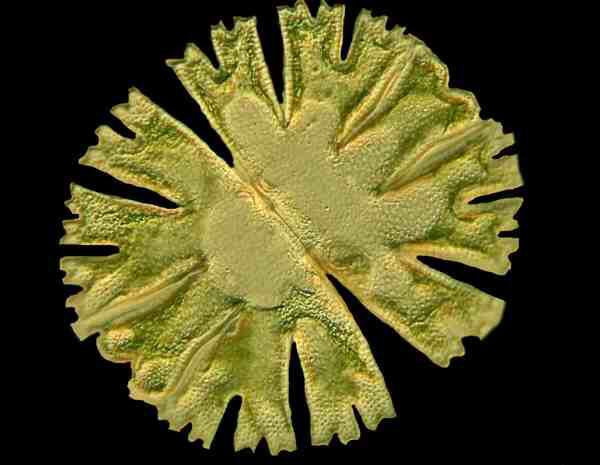
This is an image of the desmid Micrasterias taken with Nomarski contrast. If you want to see some additional wonderful images of desmids, check out Wim van Egmond’s website.
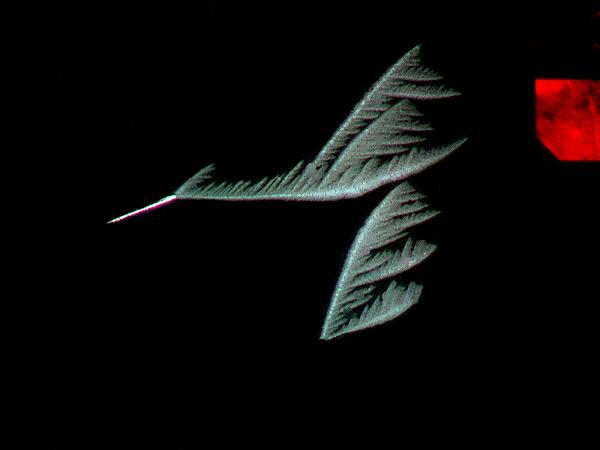
Here again, nature shows us patterns that we can project an image onto. This was produced from a mixture of Bromoseltzer, an aid for upset stomach, sodium silicate, and a biological stain called Alizarin Red S.
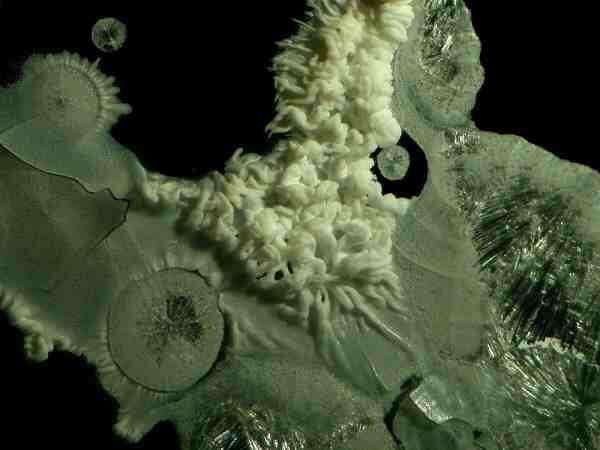
Speaking of sodium silicate, by mixing a bit with some Vitamin C, I got this arctic landscape.
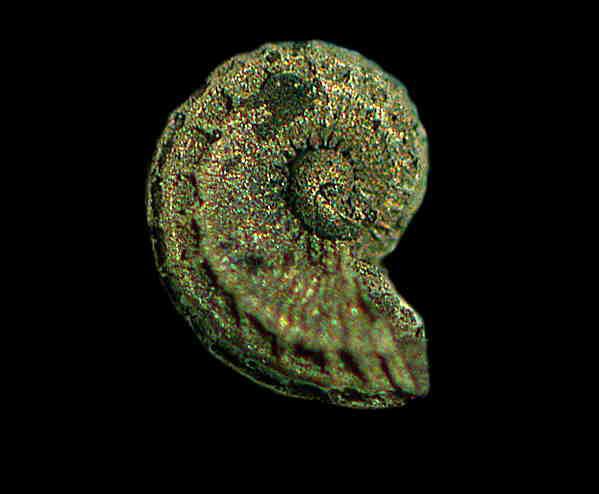
A spiral again. This is a tiny fossil snail shell which I treated with a Silver nitrate solution followed by Ascorbic acid (Vitamin C, again). It gives the impression the snail was pyritized.
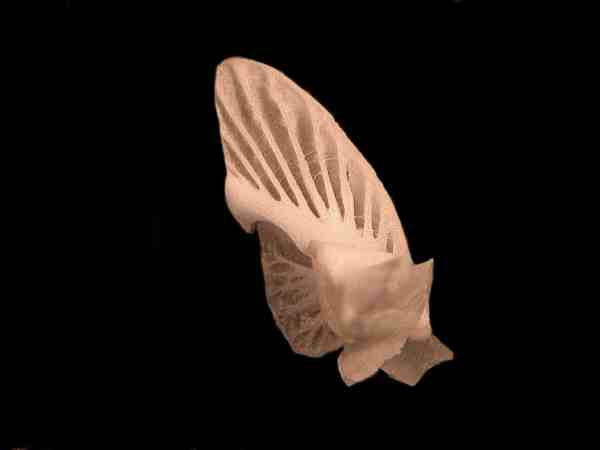
Who would ever think that a mouth part from a sand dollar could be elegant?
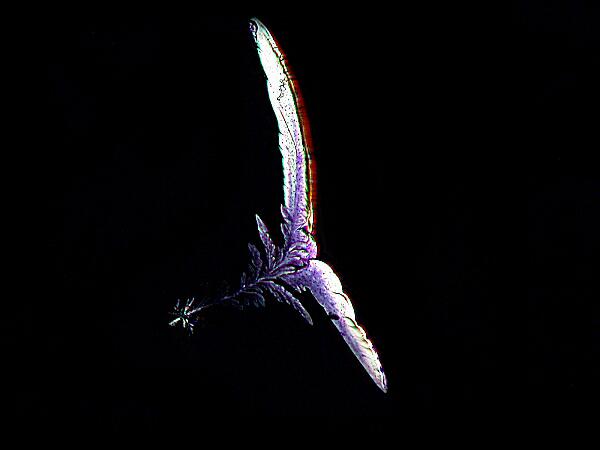
Another crystal in flight. Polarized light.
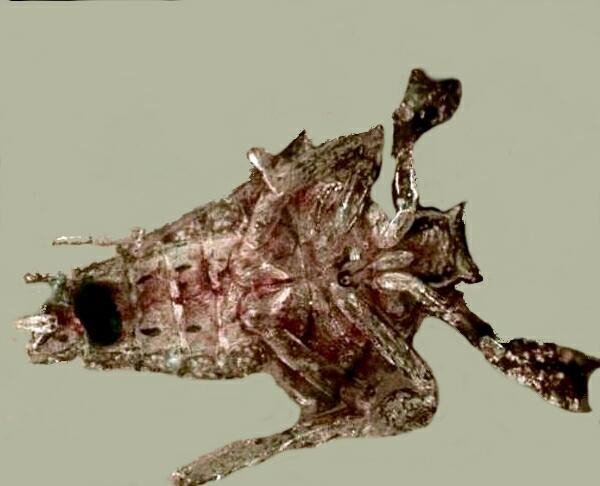
Who knows what even lurks in the heart of amber? This unlovely creature got trapped in some sticky resin millions of years ago and showed up in a piece of fossil amber which I acquired.
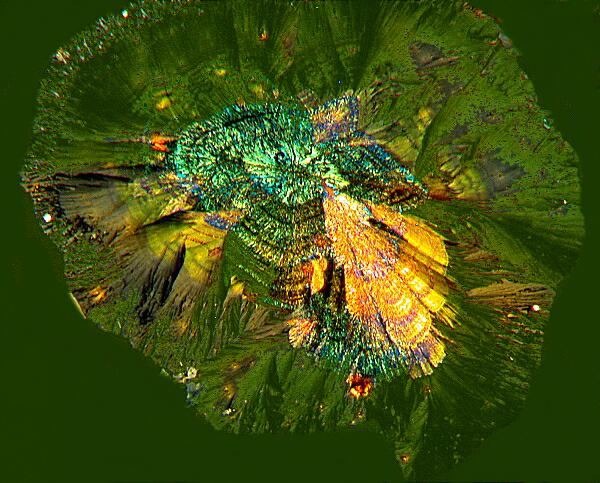
This minute crystal has for me the appearance of some large scale cosmic event, perhaps the birth of a galaxy and all from mixing a bit of toothache liquid with a drop of the biological stain Orange G. Polarized light.
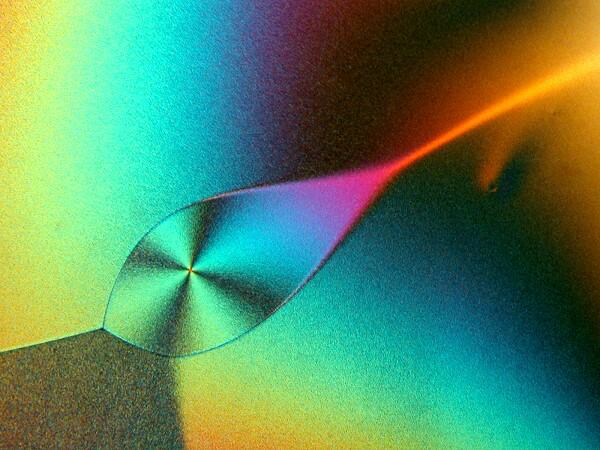
Another cosmic event. This time from a mixture of clear mercurochrome and Vitamin C. Polarized light.
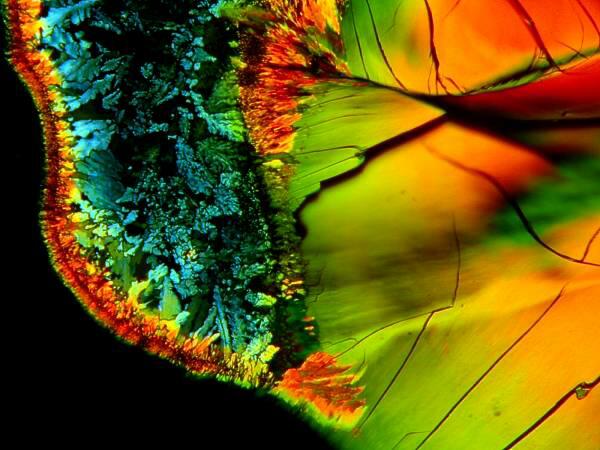
And finally, one of my wife’s favorite images. It is a mixture of the antibiotic Cephalexin and Orange G. Polarized light.
I would urge those of you who value the wonderful forum of Micscape to send e-mails to Maurice Smith and David Walker letting them know its importance for you.
All comments to the author Richard Howey are welcomed.
Microscopy
UK Front Page
Micscape
Magazine
Article
Library
Please report any Web problems or offer general comments to the Micscape Editor.
Micscape is the on-line monthly magazine of the Microscopy UK website at Microscopy-UK